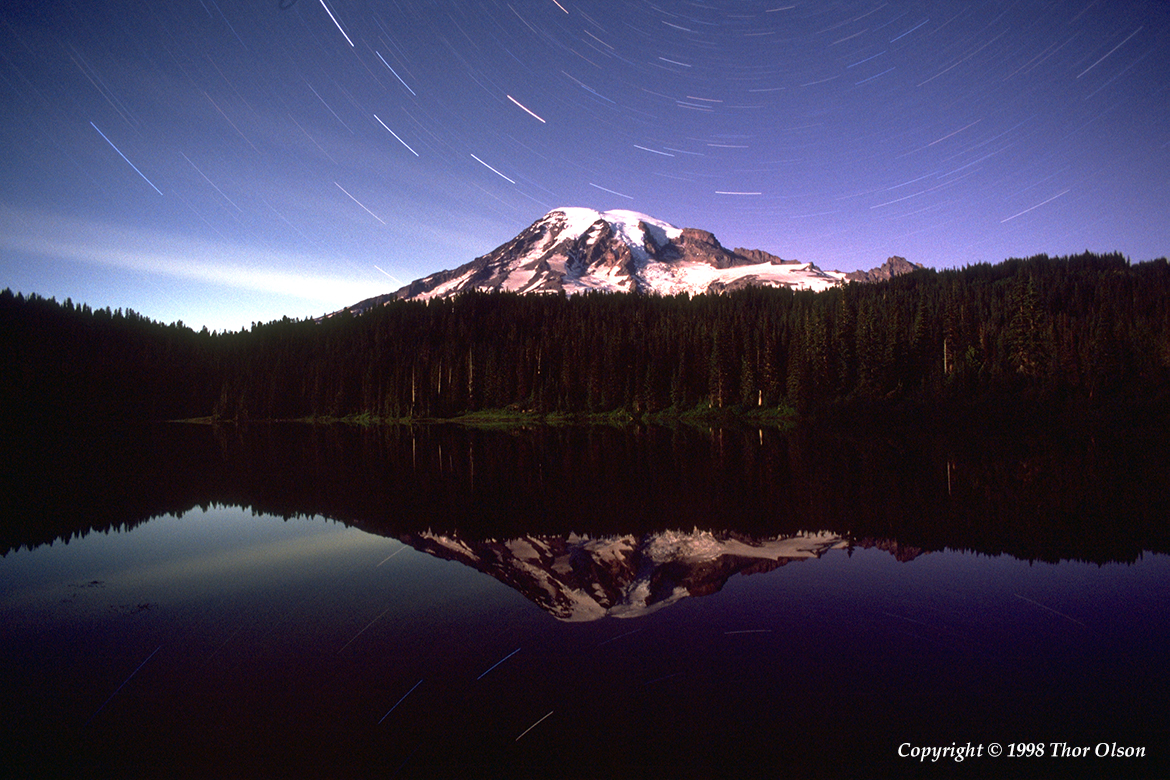
Mount Ranier National Park, 19 August 1999
Nikomat with 20mm lens at f/5.6
30 minute exposure on E200 push-processed +2 stops
I am told it is unusual to see the top of Mount Rainier. The generally overcast skies of the region and the immensity of the mountain usually guarantee that clouds will somewhere get in the way of the view. On this day however, the sky had been clear. It stayed clear while the sun set, and as the glow of twilight was replaced by the feeble illumination of a young moon, I worked my way up the mountain’s shoulder to this site, aptly named Reflection Lake.
My daytime explorations had found this lake, but the surface had been broken everywhere by wind ripples. Now the air stilled and the water became stable enough even for a time exposure of the mountain’s reflection. I wanted to include some startrail features in this picture, but it is an awkward choice: if the shutter is open too long, the moon would wash out the sky and the trails would be lost. Too short, and the stars do not make sufficiently long marks. This was my guess, 30 minutes, a balance between starlight and skylight.
This picture also answers the question, “what color is the sky at night?” Maybe nocturnal creatures can see in color at night, but we don’t. The moon lights up the world, including the sky, with reflected sunlight. The same physics applies, just at lower levels of illumination, and so the sky is blue!
A few cirrus clouds stream past in the distance, but they’re not enough to keep the brightest stars from showing. Four of them above and to the left of the mountain peak are the bowl of the Big Dipper, each bluish except for the brightest star in the constellation, Dubhe, a distinct orange color.
The moon set shortly after exposing this picture. Its low angle is apparent from the long shadows on the distant snowfields. My time in Rainier Park would end the next day, but this was a remarkable evening to finish my visit.
